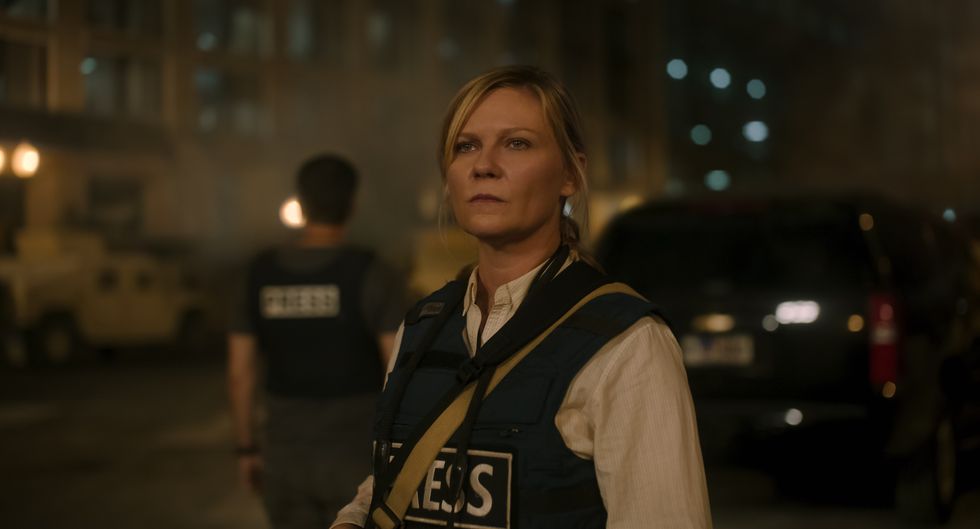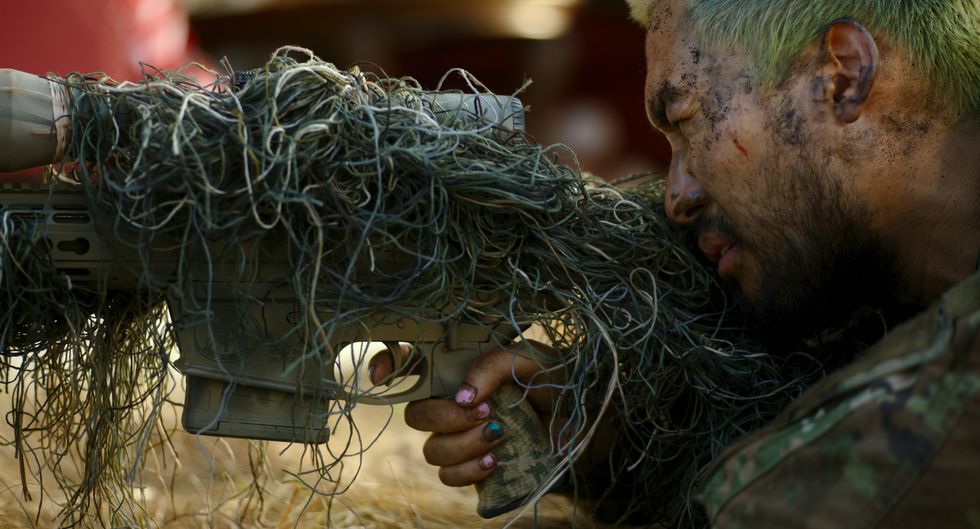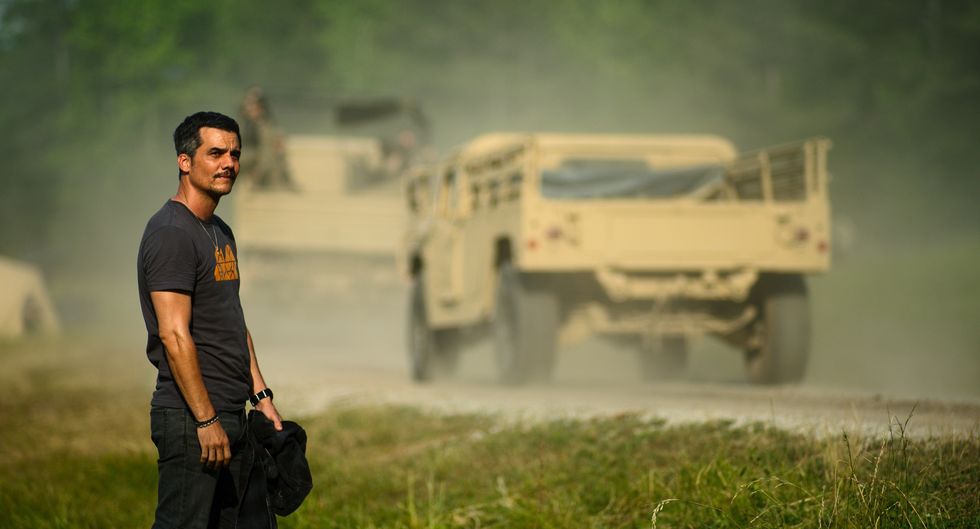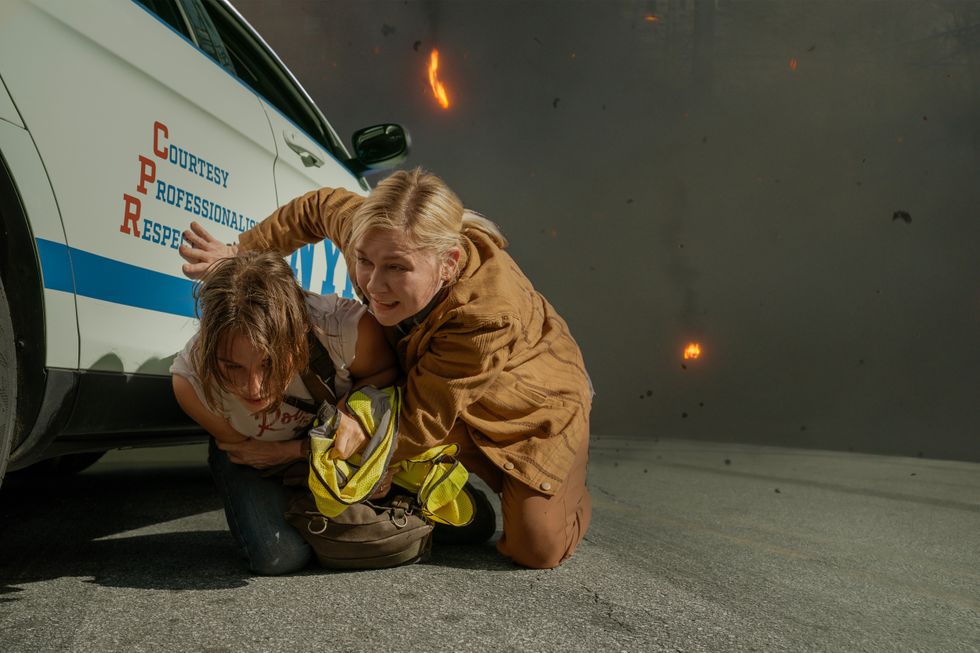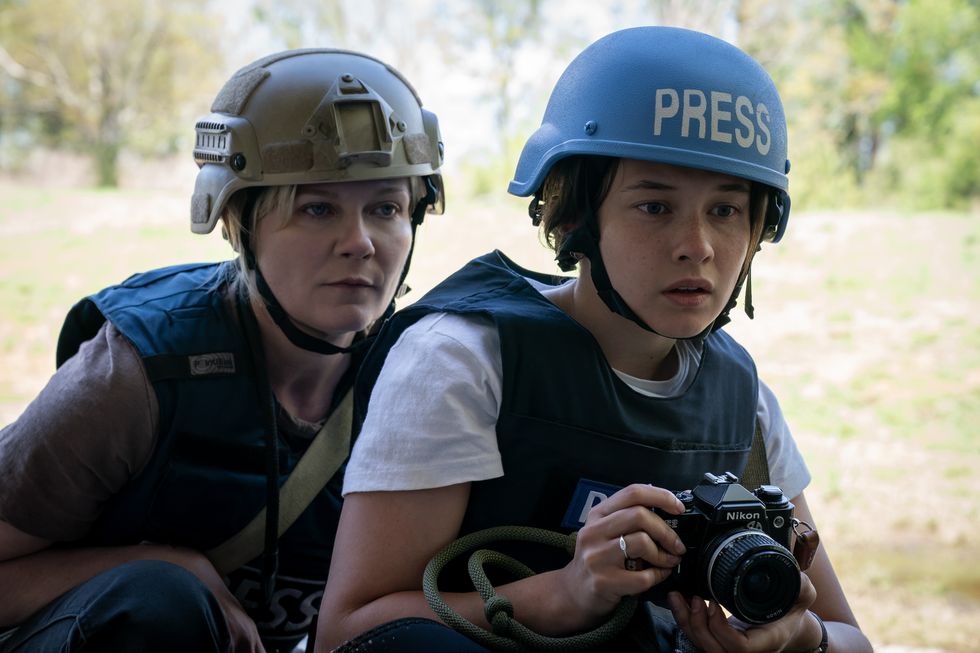The Film Made by More Than 5000 People: Nicolás Alcalá Talks About His Transmedia Project 'The Cosmonaut'
Have Nicolás Alcalá and his team at Riot Cinema Collective discovered the future of filmmaking? After learning what steps these filmmakers, based out of Madrid, took to get their project, The Cosmonaut (para los hispanohablantes, El Cosmonauta), made you might say "yes". This film is a transmediatic experience that has broken all the world's crowdfunding records by raising €130,000 in 3 days. On May 14th the film will be available to view for free. However, with an investment of €5 to €50 (about $6.55 to $65.46) you can purchase the "K-Pass" to gain access to tons of extras: 32 additional web episodes, mockumentary, a "secret newsletter", and the opportunity to copy, remix, and distribute the film as you wish."The Film Made by More Than 5000 People" is, in fact, not only a film, but an experience; an experience created, had, and shared by thousands of people all over the world.
Alcalá granted NFS an extensive interview touching on everything from how he first got into filmmaking to the details of his experience making his debut film The Cosmonaut. Watch the trailer, and after you're done recollecting yourself (because surely you'll be blown away), check out the interview below.
The Cosmonaut Trailer (In all your screens - May 14th 2013) from Riot Cinema on Vimeo.
NFS: Tell us all about The Cosmonaut! What's it about and who's involved?
NA: The Cosmonaut is the story of Yulia, Stas and Andrei, three characters surrounded by events that happened over a fifteen-year period: successes and failures, accidents, conspiracies, favoritisms and secret missions. It's the story of the Space Race... from the Soviet point of view. A love triangle seen from a very personal point of view with an innovative narrative due to it's transmediatic approach. It was a leap of faith since we innovated so much, not only in the funding and distribution part, but also on the narrative part, breaking the story world in a lot of pieces (the 34 webisodes, the film, the book, the diaries of the cosmonaut, the facebook fiction).
But besides what it is as a film, The Cosmonaut is an epic story. All the things that happened between the moment I read Easy Riders, Raging Bulls five or six years ago and now are an epic tale of wild indie dreams, excitement, huge loads of work, crazy things, and tons of luck.
Behind The Cosmonaut there is one of the most amazing creative teams that any film could have dreamt about. Besides my beloved partners, Bruno and Carola, with whom I built our entire project and our company, there are also amazing directors of photography Luis Enrique Carrion and Pablo Clemente (what they achieved with 5Ds it's gonna be studied in film schools in the future, I'm sure), incredible and generous British actors, crazy skilled editing assistants, amazing designers and a lot of very special brains put together to get the film to it's highest possible quality. I don't think I'm ever gonna have an opportunity like this, working with all these talent and with such implication and commitment.
NFS: What was the production process like for you guys?
NA: Remember the blood quote from Melville? What can go wrong when you are shooting a Russian period film, in Latvia, with a crew of 40 people from 5 countries, British actors and a budget 10 times smaller than your screenplay is asking for?
Well... Everything.
The shooting was kind of hell on Earth. I was a huge fan of epic shooting stories like Apocalypse Now and Herzog's Fitzcarraldo...but it is not so funny when you live something like that on your first film. Two years later, we have all recovered from what happened there and we see it now as a dark place where we were once, but it was hard. The only thing that kept us moving forward was the quality of the images we were shooting each day and all the people that were cheering us on and betting on the project.
But this project is like that. It's like a rollercoaster, the best and worst things can happen in the same week. For example: a week from the shooting, with all the technical equipment sent to Latvia, everything ready and packed up, plane tickets already bought...our Russian co-producer drops out with her $150,000 investment. We decide to try to shoot anyway (although that was half our budget and without it we weren't going to have enough money to stay the necessary time, not even to buy the plane tickets to come back). We made a video telling our fans what happened and asking for a crowdfunding emergency campaign to try to raise 60K in a month to, at least, stay there a couple more weeks and finish the film in any way possible. When we landed on Latvian soil, three days later, we had raised $170,000 from 600 hundred people.
NFS: So, knowing that crowdfunding played a huge role in making your film a possibility, can you tell our readers some advantages and disadvantages of using it?
NA: I'll be brief:
PROS:
I have made a film.
I have made the film I wanted to do.
I have made it with complete (and I mean it) creative freedom. Not a single producer/distributor/investor up my ass telling me what and what not to do (which sometimes can be not so good, but I'm glad I had the chance of experimenting it, since very few directors have the chance to make mistakes by themselves and make choices).
I have made it with 5000 new friends I made along the way that were there for me in the good and bad moments and that will talk about their movie much better than myself.
And all this allowed us to not only make the film we wanted but to also be able to skip the intermediaries if we needed to, to be able to negotiate in our terms many times and to distribute the film the way we wanted.
All of this ROCKS.
CONS:
Melville once said that your first film should be made out of your own blood. That was definitely our case. It has been the most difficult challenge of our lives. It has been painful and exhausting and nasty some times. But, would I change one second of the last four years of my life? Definitely not.
NFS: Since creative freedom is so important to you and your team, what are your thoughts on independent film?
NA: Oh! So much to say, so little space! I think it's necessary for one reason: creative freedom. I LOVE Transformers or Mean Girls as much as Stalker or Elephant, but the risks that Tarkovsky or Van Sant took on their approach to their films has little chance to be allowed in a hundred million dollars film. Which is normal. Every film (and therefore it's budget) needs to adapt to its potential audience. And there is a film for every occasion and for every person, so I think is very important that indie film keeps doing it's thing (shaking people's emotions, making them think, bringing some poetry to the world) and mainstream films theirs (mainly: entertain). Though, I have to say that I love the intersection of them both. When indie meets mainstream ambitions (like The Cosmonaut) and when mainstream meets that auteur approach (Michael Mann, Fincher, Aronofsky...you name it).
NFS: What about social networking? It seems to be playing a big role in indie filmmaking these days. Do you use social media as a production tool?
NA: In a way, yes. We asked a lot of times for help from our community. We decided not to get them involved in the creative process in a direct way (they can't choose who dies or the name of the main character, because we believe that behind a film there should one creative vision leading the way) but they were able to participate in small tasks. For example, instead of spending 4 hours researching which rocket Chelomei was building in 1966, I asked in our Twitter and 3 minutes after that I had 3 answers. Things like that.
We also decided to stream the shooting so every day during the 9 shooting weeks you were able to connect to us for an hour and ask questions and see what we were doing. That was pretty amazing. To be in touch with so many people around the world even though we were as far as Latvia or Moscow. A teacher even interrupted a class at university and got online with all his students! It has been much easier making the film with all this community behind us. It has its cons, like having a lot of pressure from many people, but I don't think my way of making the film would have changed without them and they brought so many good things!
NFS: So, let's talk gear. Tell us about what tools/methods you used to make your film.
NA: I always say that my ideal shooting crew is 9 people. I love to be light and fast and adaptable to change. Taking the risk to shoot with DSLRs was a huge leap of faith but it turned out to be the best decision we could have taken. Thanks to that and the incredible DOP and camera I had, we were able to shoot under extremely difficult conditions with an unusual speed and shooting almost everything with two or even three cameras at the same time. We barely used lighting (a couple of Kino Flo panels and some Arris in a few scenes here and there). And we used a lot of low-tech-very-indie tools (CineSliders, cars and bikes as dollies, small handy steady-cams and a bunch of other inventive techniques) that we somehow managed to look like they were real dollies, stabilizers, and high tech toys.
During the shooting, a director viewfinder was handy sometimes but what I used the most was my iPad. I had there the screenplay, a breakdown of every scene, not only with technical information, but also with personal and emotional information on how to approach each sequence: the tone, the rhythm , the color...visual references to show to the team at every moment, shots from many different films to get inspired, music to get in the mood for certain scenes. It was great having all that in my hands all the time.
During the editing, while we were about to start with the cutting of the film, we doubted about trying the recently released Final Cut Pro X or sticking to our well known and lovely and functional Final Cut Pro 7, which was, for obvious reasons, the final choice. Since I was going to be editing along with my editor Carlos Serrano Azcona, and making the final cut by myself, I needed a tool I was able to use with confidence.
Besides all this tech, I think the other "gear" that defined my work and the shooting and, because of which I earned the surname of Don Draper, was a box of wools and linens and pieces of fabrics I asked the art team to put together for me. We used them all the time to generate the oneiric look of the film, to shoot through them, to create tones and colors that the locations were lacking and to create that very special look that the film has. That and soap, with which we dirtied all the mirrors in the film dirty, to look blurry and soft and to shoot towards them.
NFS: What is your distribution strategy with The Cosmonaut?
NA: The plan is very basic: let's give it to the audience the way the audience wants it. Distributors and exhibitors seem to have forgotten that golden premise that the consumer is always right. So, how do you fight piracy? Giving people the film the way they want it and leting them choose where, how and when. Even how much. The Cosmonaut is going to be released May 14th. Same day in movie theaters, DVD/USB, and the internet. On the internet is going to be in HD and for free. Why? Because it will be anyway. Why run against the wind? We believe in building a sustainable model based in trust and engagement. That's way the film will be "Pay What You Want". If you like it, pay what you like, or what you can afford. If it's more than $6, then it will grant you access to our Cosmonaut community: the K Progamme (K-Pass), with 20 of the 34 webisodes that are not for free on the website, additional content, behind the scenes, a private newsletter, the soundtracks of the film...
We believe in added value, so that you are not paying for time exclusivity (which doesn't exist anymore with the internet) but for something else: a special edition DVD, a t-shirt or a screening with something that makes it unique. Our DVD will be filled with content and we will edit the film in a USB key with the shape of The Cosmonaut's spaceship. A rare collector item, numbered, limited and signed. And about the premieres? We will make two or three official ones to kickstart the film. Then, anyone, in any part of the world, will be able to organize one of their own and share profits with us (50%).
People can also demand it. So, if you see there is 400 people willing to watch the film in your city you will have a pretty accurate idea of how many people will attend the projection. We will put you in contact with them and...voilà. We will have micro distributors all over the world (there are more than 40 screening petitions already, in 12 countries).
And since the film is online... Why not take advantage of the power of the networks? It will be licensed under Creative Commons, which means you will be able to copy it, exhibit it and even remix it as long as there are no commercial purposes involved. And, if there are commercials (say you want to project the film and charge for the tickets and popcorn, or you want to sell the DVD in your country or screen it on TV with ads or even make an alternative cut which is a hit and you want to sell it), it is as easy as sharing them with us and you too can benefit from our film.
Why did we decided to do it this way? Well, because it's the natural way to do it. Because this is how the new world works. Because the client is always right. Because this is how we would like to watch films and be willing to pay for them. And because...why not?
NFS: Finally, what advice would you give to new indie filmmakers who want to make their own film?
NA: I'll try to summarize it in the following decalogue:
1. Don't sell your soul. Stay true to yourself. Always. Keep your creative freedom as long as you humanly can.
2. Get inspired by others. Let other films, books, images keep you excited, alive, connected.
3. Take control of your audience. Built it around you. Don't build it and then allow the distribution company to steal it. They can borrow it from you, but try to make them stay with you. Always. You exist because of them (your audience).
4. Be a benevolent dictator. Listen to your team. Surround yourself by people more talented than you are but always know when to say no or to ask for something else...something better.
5. Push the boundaries. Not only yours, but the world's. That's your work as a storyteller: To go further. To explore. To discover.
6. Hack the world that surrounds you. Re-invent yourself in every film. In every strategy. Never accept the Status Quo.
7. Be transparent and honest. It's painful but worth it. It leads people to trust you and you will need that when you want to convince them that your next crazy story is worth a try.
8. Go and make films. This answer might seem redundant, but it is not. I know a lot of filmmakers that complain they don't have money to make their film or they don't have a team or they are too scared to even try. I made a film that looks like a Hollywood one with a photo camera and a couple of light panels. If you would have told that to the Nouvelle Vague or New Hollywood guys in the 70s, when they were breaking their asses to make films, they would have punched you. Making films is not a problem anymore. Having good ideas and having the guts to make them is what is difficult.
9. Share. Share your knowledge. Share your images for people to produce new ones. Share your concerns and your ideas. Share all the time, because it will eventually come back to you. Karma is a cool concept.
10. Be a poet, an anarchist, an outcast. Don't be a bureaucrat. Films are about being alive and looking at the world from a different perspective.
***
The Cosmonaut will be released on May 14th, 2013. Visit its website to learn more and participate in this transmedia experience.
Thanks to Nicolás Alcalá and Riot Film Collective for taking the time to answer our questions, we're excited to see the film!
Links:





